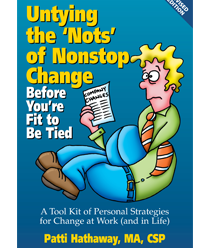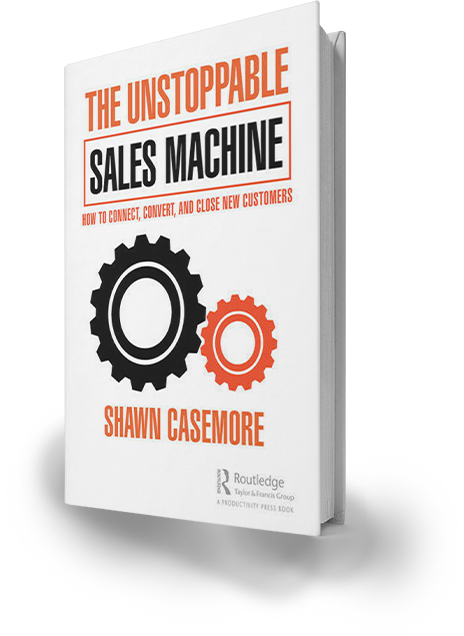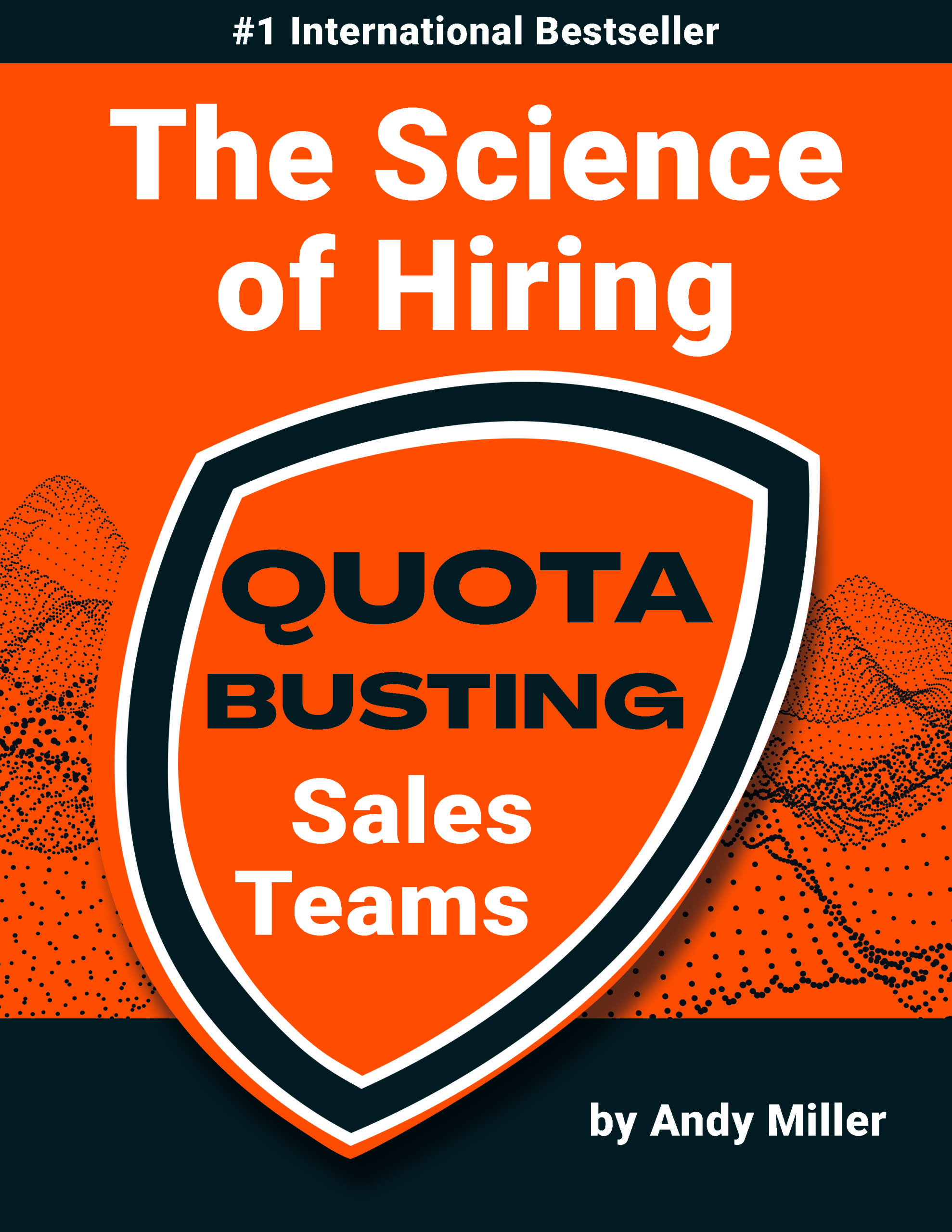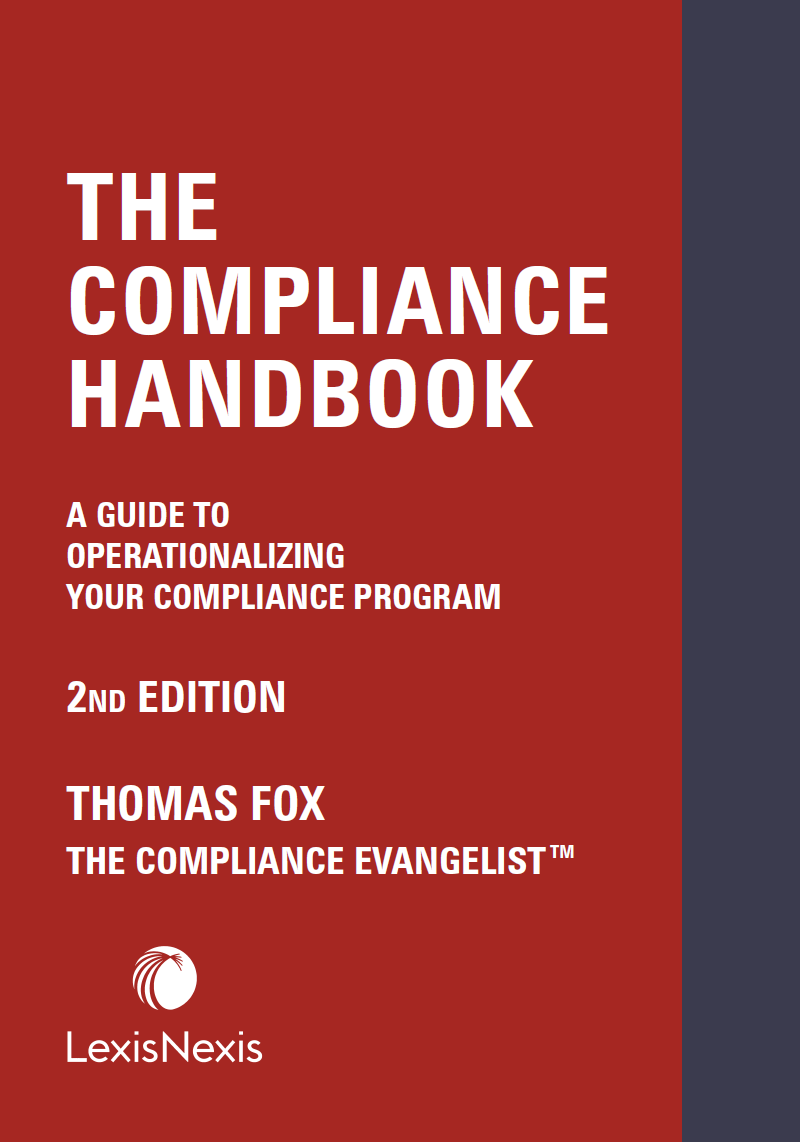Untying the 'Nots' of Nonstop Change
Patti Hathaway, M.Ed, CSP
Nonstop change is now the workplace norm. According to a 2013 global survey, 82% of companies had undergone significant reorganizations in the previous year, and only 21% say those efforts were a success. Companies with failed redesigns cited active employee resistance to the change as a challenge. Employees struggle to deal with the enormous amount of change they face and most feel out of control and stumped by the daily uncertainty.
The Institute for Corporate Productivity, a workforce research firm, found that companies surveyed considered their top two critical issues to be coping with change and managing organizational change. And yet, the study found that only 35% of the top performing organizations are effective at managing change. How much more would the other 65% be achieving if they managed change more effectively? What’s the solution?
In this book, you’ll experience practical, uplifting solutions that will allow you to master change, not just survive it. Learn why change is so difficult. Learn how to lessen the pain and stress nonstop change causes. Shift your perspective with inspiring personal stories, groundbreaking research, and proven behavior-change strategies.
About Guest Blog Post

In the world of business, mergers continue to be a reality (think airlines) and I’m finding many of my clients are also merging departments. So, I thought the following tips this month might be helpful. On my next blog, I’ll continue this theme with the 4 Tips to Avoid Merger Mistakes.
The 3 Costliest Merger Mistakes
Mistake 1: Tell employees “change is good.” Employees don’t buy it and you will lose credibility. Most change is painful.
Mistake 2: Promise your employees that this will be a “merger of equals.” There are never two winners in a merger. Mergers tend not to be fair, so be realistic with your employees. Honesty is always the best policy.
Mistake 3: Ask for employee feedback on change implementation strategies and then don’t use the feedback. It’s the quickest way to alienate your employees. If you don’t want or need employee input into the change process then don’t ask for it. Don’t pretend that you are open to suggestions when you are not. Lies at the beginning will cause people to not trust you later.
Next time, I’ll cover the 4 Tips to Avoid (the above) Merger Mistakes. Taken from my tips booklet: 93 Tips for Managing Change. Also, check out the 42 change articles on my website!
About the Author
Patti Hathaway is known as The CHANGE AGENT. As a bestselling author of five books, a Certified Speaking Professional, and business advisor and coach, she has helped tens of thousands of people learn to thrive, not just survive, in the challenges of change. Her seminars on change have been called “life changing” and “provocative and hard-hitting,” with participants saying, “don’t miss this program if you are struggling with change,” “you have changed my life,” and “thank you for a message I needed to hear but didn’t want to.”
In this book, Patti shares her own and others’ personal struggles and triumphs while teaching you achievable solutions she’s refined over 25 years of service and research. Her books have been translated into 6 languages and have collectively sold over 100,000 copies. Her expertise has been featured in the New York Times, Harvard Management Update, Entrepreneur Magazine, Sales and Marketing Excellence, Woman’s Day, American Way, Cosmopolitan, and numerous industry-specific journals. Patti’s book, Untying the ‘Nots’ of Nonstop Change Before You’re Fit to be Tied (Destination Publications, 2000, revised 2014), is based on surveys of thousands of people across the U.S.
























